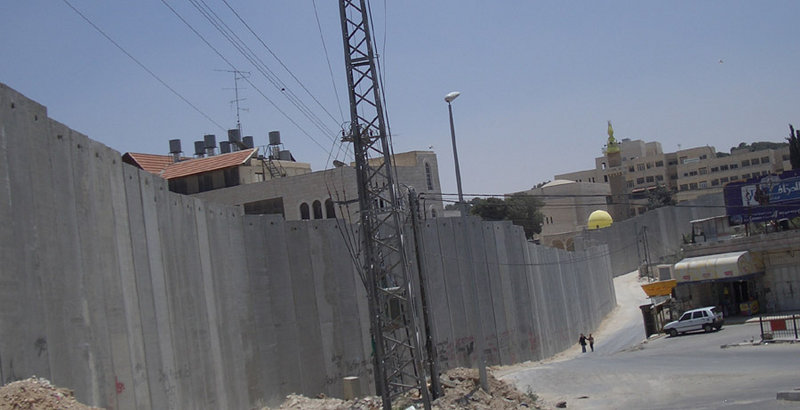
The Separation Barrier was built by the Israeli government to prevent uncontrolled entry of Palestinians from the West Bank into Israel. To get through it, Palestinians must obtain a security clearance from the Israel Civil Administration (the governing body in the West-Bank), and then pass a security inspection by the Israeli soldiers manning the checkpoints located in the gates of the barrier. Some Palestinians must go through these checkpoints to get to their land or workplace, because the barrier was erected between their home and their job.
My latest video report focuses on organization of Israeli women peace-activists, who visit these checkpoints on a daily basis, to document the soldiers' behavior. The organization is called MachsomWatch, and it includes several hundred women from various ages and professions in the Israeli society. I spent several days with two MachsomWatch volunteers to learn what kind of influence they have on the the interaction between the Palestinians and the soldiers at the checkpoints:
The main location of filming in this video report was Habla Checkpoint, a gate in the Separation Barrier, located near the Palestinian city of Qalqilya. The construction of the Separation Barrier began in 2002, and today it is mostly completed. Its declared objective is to prevent uncontrolled entry of Palestinians into Israel. In some sections the barrier is comprised of an electronic barbed-wire fences, and in other parts it is a concrete wall six to eight meters high. While it mostly follows the 1967 borders, there are several extensive parts in which the Separation Barrier deviates into the eastern side of the border known as the Green Line to make sure large Jewish Settlements in the West Bank are to the west of the barrier.
There are dozens of gates -- similar to the Habla checkpoint -- along the 710 kilometer long Separation Barrier. In the northern entrance to Jerusalem is one of the most tense gateways through the Separation Barrier, know as Qalandiya checkpoint. Thousands of Palestinian men, women and children cross it everyday on their way from Ramallah or other West Bank cities to Jerusalem. MachsomWatch women -- including Anat and Dalya, the main characters in the video report I produced -- visit Qalandiya checkpoint regularly. Recently, one of the activists documented the events.
The women volunteering for MachsomWatch are considered by some in the Israeli society as leftist and traitors because the organization's activists write and publish reports which in some cases display Israeli soldiers misusing their power and behaving immorally. Recently, MachsomWatch and other Israeli human rights organizations have been targeted by Israel's right wing government, and legal steps have been taken to try to limit their influence.

The Separation Barrier at Abu-Dis (Zero)
Relevant to the topic:
- Mapping the Separation Barrier, Washington Post, August 2007.
- Explaining the need for Separation Barrier, Israeli Ministry of Foreign Affairs.
- Is Israel's separation barrier a unique solution? The Middle East Forum Quarterly, Fall 2004.
- The barrier's role in a potiential Palestinian state, NY Times, September 2011.
